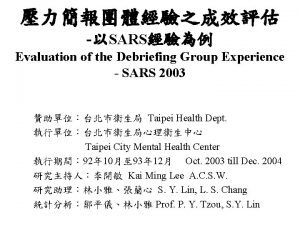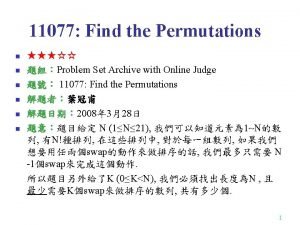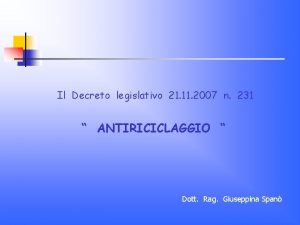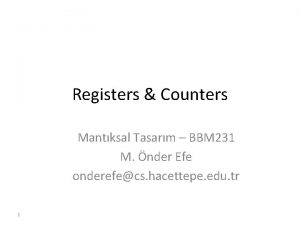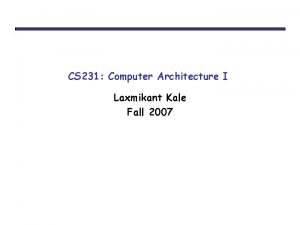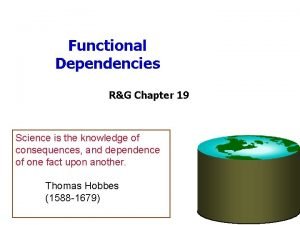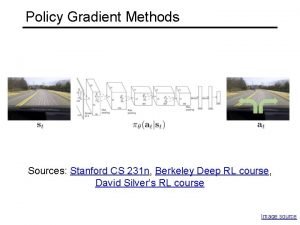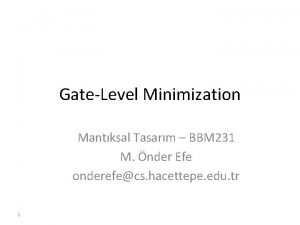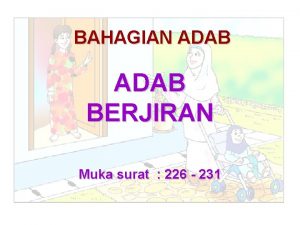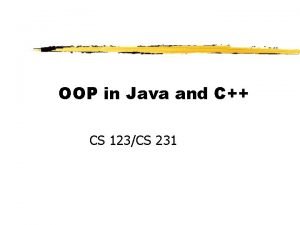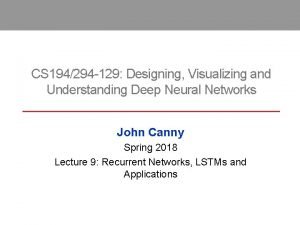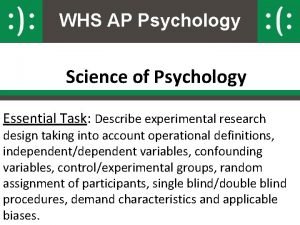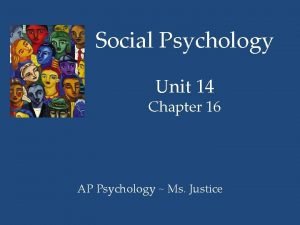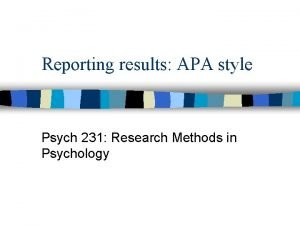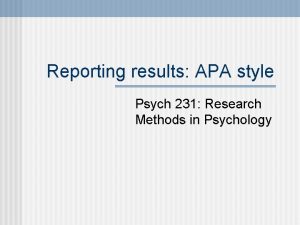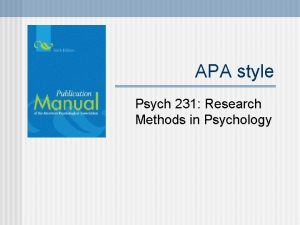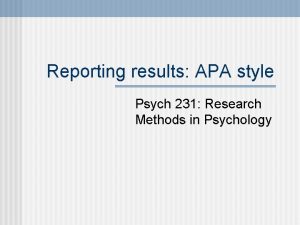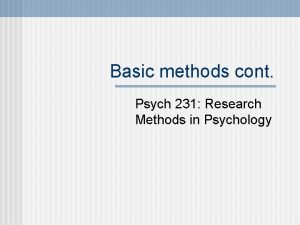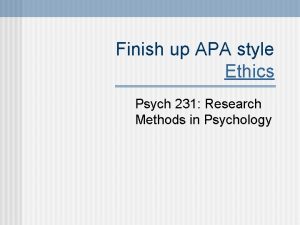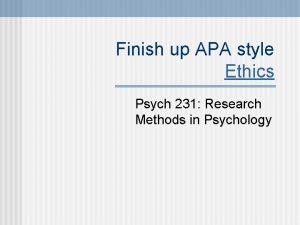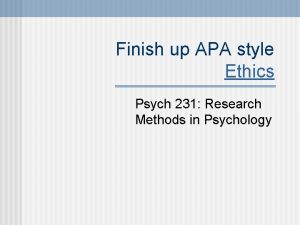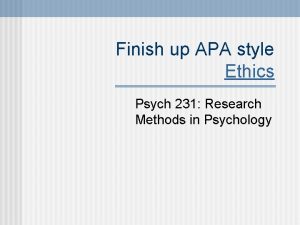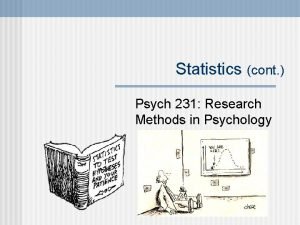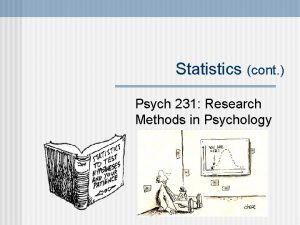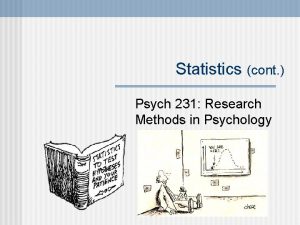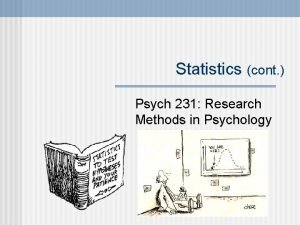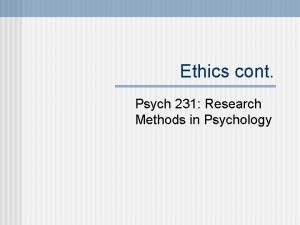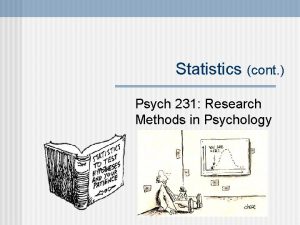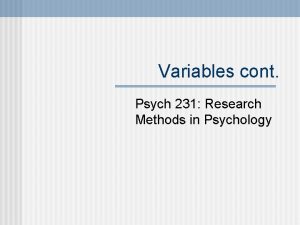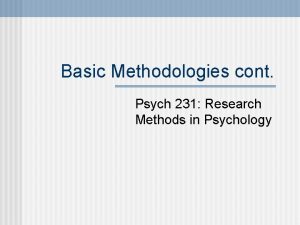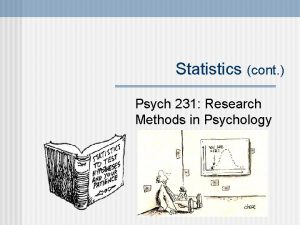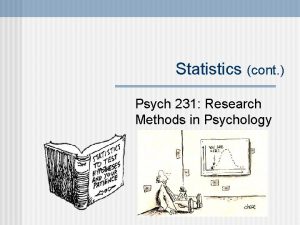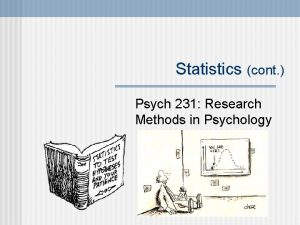APA style cont Psych 231 Research Methods in
































- Slides: 32

APA style cont. Psych 231: Research Methods in Psychology

n Exam 1: Coming up soon (Tues, Feb 9) n n Chapters 1, 2, 3, 4, 8 Syllabus has a link to terms for review n CITI ethics training n http: //psychology. illinoisstate. edu/jccutti/psych 231/f 16/fall 2016 ethics. html n n Not due until week 5, but since ethics is covered on Exam 1, I recommend checking it out sooner rather than later This week’s labs: n n Download AND read the Assefi & Garry (2003) article before labs Bring the article to labs Announcements

n The basic parts of a research article: • Abstract • Body • Introduction • Methods • Participants • Materials/Apparatus • Design • Procedure • Results • Discussion • References • The rest • Authors Notes, Footnotes, Tables, Figures & Captions APA style: Parts of a research report

Running head – will go on top of pages of published article, no more than 50 characters Running Head: ADOLESCENT DEPRESSION Title should be maximally informative while short (10 to 12 words recommended) Order of Authorship sometimes carries meaning Adolescent Depression and Attachment Ima G. Student and Soyam Eye Topnotch University Affiliation – where the bulk of the research was done Title Page First Contact 1

Journal of Developmental Psychology, 56, 1 -15 (2057) Adolescent Depression and Attachment Ima G. Student and Soyam Eye Topnotch University Running Head: ADOLESCENT DEPRESSION Abstract 1 Adolescent Depression and Attachment Ima G. Student and Soyam Eye Topnotch University 1 Title Page § Published title pages will look a bit different, but you’ll find these pieces of information. Typically the body of the article will begin as well.

n Abstract: Short summary of entire paper • • • n § 150 to 250 words The problem/issue The method The results The major conclusions Writing Recommendation: write this after you’ve finished the rest of the paper Reading: Good early contact, but remember that it is short on detail § Shows up in Psyc. Info § Gets skimmed before reading the article Abstract

n Hourglass shape Introduction Background Literature Review Statement of purpose Specific hypotheses Methods Results Discussion Conclusions Implications Body Start broad Narrow focus Most focused Broaden

n Introduction - gives you the background that you need § Issue and Background • What is it? Why is it interesting/important? § Literature Review (video | video) • What has been done? What theories are out there? § Statement of purpose • What are you going to do and why? § Specific hypotheses (at least at conceptual level) • What do you predict will happen in your research? Body

n Introduction - gives you the background that you need § Reading checklist 1) What is the author's goal? 2) What are the hypotheses? 3) If you had designed the study, how would YOU have done it? n Writing checklist • Be cohesive • Be relevant (why are the reviewed studies relevant? ) • Work on the transitions (make the flow logical) Body

n The basic parts of a research article : § Method - tells the reader exactly what was done § Enough detail that the reader could actually replicate the study. (video | video) § Subsections: § Participants - who were the data collected from § How many, how they were selected (& where from), any special selection requirements, details about those who didn’t complete the experiment § Apparatus/ Materials - what was used to conduct the study § Design § Suggested if you have a complex experimental design, often combined with Materials section § Procedure § What did each participant do? Other details, including the operational levels of your IV(s) and DV(s), counterbalancing, etc. Body

n The basic parts of a research article : § Method - tells the reader exactly what was done § Reading checklist 1 a) Is your method better than theirs? b) Does the authors method actually test the hypotheses? c) What are the independent, and control variables? 2) Based on what the authors did, what results do YOU expect? • Writing checklist • Is it clear why the procedures were selected? • Are any assumptions explicit and defended? • Is the level of detail sufficient for replication? Body

n Results (state the results but don’t interpret them here) (video | video) n n Verbal statement of results Statistical Outcomes • Means, standard deviations, t-tests, ANOVAs, correlations, etc. n Tables and figures • These get referred to in the text, but actually get put into their own sections at the end of the manuscript Body

n Results (state the results but don’t interpret them here) § Reading checklist 1) Did the author get unexpected results? 2 a) How does the author interpret the results? b) How would YOU interpret the results? c) What implications would YOU draw from these results? • Writing checklist • Is it clear how the hypotheses are tested by the analyses? • Would a graph or table help clarify the results? • What questions might the reader still have, and how could I answer them in this section? Body

n Discussion (interpret the results) n n Relationship between purpose and results Theoretical (or methodological) contribution Implications Future directions (optional) § Reading checklist 1 a) Does YOUR interpretation or the authors' interpretation best represent the data? b) Do you or the author draw the most sensible implications and conclusions? • Writing checklist • Have you stated your most convincing argument? • Do the conclusions follow straightforwardly from the results? Body

n References (video | video) n n Author’s name Year Title of work Publication information • Journal • Issue • Pages n n n Footnotes Tables Figures Adolescent Depression 29 References Barnett, P. A. , & Gotlib, I. H. (1988). Psychosocial functioning and depression: Distinguishing among antecedents, concomitants, and consequences. Psychological Bulletin, 104, 97 -126. Beck, A. T. (1978). Beck Depression Inventory. San Antonio, TX: Psychological Corporation. Benoit, D. , Vidovic, D. , & Roman, J. (1991, April). Transmission of attachment across three generations. Paper presented at the Biennial Meeting of the Society for Research in Child Development, Boston. Benoit, D. , Zeanah, C. H. , & Barton, M. L. (1989). Maternal attachment disturbances in failure to thrive. Infant Mental Health Journal, 3, 185 -202. Benoit, D. , Zeanah, C. H. , Boucher, C. , & Minde, K. (1989). Sleep disorders in early childhood: Association with insecure maternal attachment. Journal of the American Academy of Child and Adolescent Psychiatry, 31, 86 -93. When something odd comes up, don’t guess. Look it up! The rest

n n n These are used to supplement the text. To make a point clearer for the reader. Typically used for: n n n The design Examples of stimuli Patterns of results Figures and tables

Clarity Logic of the argument is clear Acknowledge the work of others (avoid plagiarism) Appropriate use of headings Correct citing and references Good grammar Active (preferred) vs. passive voice (avoid) n n How are pieces related, clear transitions between paragraphs Active: Summers and Jordan (2009) hypothesized that speakers use to much passive voice Passive: It was hypothesized by Summers and Jordan (2009) that speakers use to much passive voice Avoid biased language Checklist - things to watch for

Ethics – people should be treated as ends not means Ethics

n Two basic categories of ethical concerns: n n Need to consider the rights of our participants in our research Need to behave ethically as scientists and practitioners Ethical Responsibilities in Research

n Two basic categories of ethical concerns: n n Need to consider the rights of our participants in our research Need to behave ethically as scientists and practitioners Ethical Responsibilities in Research

n For the most part the researcher has the power • You know what is going to be done to the participants • Participants may feel like they have to do it • Consider the Milgram (1963) study • demonstrated how far people may go to obey authorities • This study itself exemplifies the need for strict rules of ethics Using humans in research

n Consider ethics at each step n n n n Does the topic/idea for the research have some ethical issues surrounding it? How are participants selected? What methods may be used on the participant population? What measurement techniques will be used? What design is appropriate? How are the data analyzed? How are the results reported? Ethical Responsibilities in Research

APA’s code of ethics http: //www. apa. org/ethics/code/index. aspx

5 General Principles (& many ethical standards) A. Beneficence & Non-maleficence • B. Fidelity & Responsibility • C. Honesty and accuracy in science Justice • E. Uphold professional and scientific standards of contact Integrity • D. Protection from harm, Cost/Benefits analysis, Confidentiality Freedom from coercion Respect for people’s rights and dignity • Basic courtesy, Informed consent, Debriefing, Avoid deception APA’s code of ethics http: //www. apa. org/ethics/code/index. aspx

n Information to allow a person to decide if they want to participate n Basic purpose of the study Participation is voluntary Risks involved Benefits involved Rights to refuse or terminate participation n Assent - guardians if participants are not competent n n • e. g. , children, developmentally disabled people Informed consent

n Types n Passive deception • Withholding information about the study n Active deception • Deliberately misleading participants n Avoid it when possible n Consider alternatives to deception • Role-playing n When not possible to avoid n n n Make sure that you are up front with all possible risks Potential results must be worth it Must debrief participants as soon as possible (either right after participation or as soon as project is over) Using deception in research

n Costs: all potential risks to the participants n n Physical harm Psychological harm Loss of confidentiality Benefits: the “good” outcomes n n n Direct benefits to participants Benefits to knowledge base Benefits to world at large Costs/Benefits analysis

n Institutional Review Board n IRB Criteria • • Minimize risk Benefits > Risks Equal opportunity sampling Informed consent Documentation of consent Data monitoring Privacy & Confidentiality Monitoring of ethics

n Two basic categories of ethical concerns: n n n Need to consider the rights of our participants in our research Need to behave ethically as scientists and practitioners (Integrity, Fidelity & Responsibility) Fraud prevention n Replication – repeat a research study to validate results Peer Review – critical analysis of research by peers in the same area Plagiarism – taking credit for another’s work or ideas • Avoided by citing the ideas or words of others Scientific Integrity

n Ethics in Science Quiz n n Dirty tricks (this will get you thrown out) Questionable tricks (these are a little fuzzier, but be wary) Neat tricks (accepted as okay, and sometimes necessary) Ethical responsibility to science

n Ethics in Science Quiz DT n QT n NT n DT n QT n n n Dirty tricks Questionable tricks Neat tricks Fabrication of results Little or no attempt to minimize demand biases Reformulating your theory as you go Falsifying credentials Plagiarism Little or no attempt to minimize confounds Deliberately hiding (significant) errors in published work Little or no attempt to minimize demand characteristics Ethical responsibility to science

n Ethics in Science Quiz QT or DT n NT n QT n DT n QT n NT n Throwing out data n n Dirty tricks Questionable tricks Neat tricks depends reason for throwing out Reorganizing order of report of experiments Violations of underlying statistical assumptions Strategic graphing of the data Duplicate publications (presented as new) Selective reporting of the results Leaving out some bad experiments (not bad results) Ethical responsibility to science
 Debriefing report
Debriefing report Cont or cont'd
Cont or cont'd Indirect wax pattern
Indirect wax pattern Acf 231
Acf 231 Article 231 of the treaty of versailles
Article 231 of the treaty of versailles 132 213
132 213 Phy 231 msu
Phy 231 msu Decreto legislativo 21 novembre 2007 n. 231 aggiornato 2021
Decreto legislativo 21 novembre 2007 n. 231 aggiornato 2021 Eis um anjo proclamou o primeiro natal
Eis um anjo proclamou o primeiro natal Gezang 231
Gezang 231 Bbm231
Bbm231 Cs 231
Cs 231 Cost 231 model
Cost 231 model Draw 231 with base ten blocks
Draw 231 with base ten blocks 040 231 3666
040 231 3666 Cs 231 n
Cs 231 n Standford cs231
Standford cs231 Bbm 231
Bbm 231 Pengertian jiran
Pengertian jiran Germany territorial losses
Germany territorial losses 123cs
123cs Club-231
Club-231 Electric potential formula
Electric potential formula Formula of electric field
Formula of electric field Cs 231 n
Cs 231 n Cs 231 n
Cs 231 n Coco
Coco Cs 231 n
Cs 231 n Double blind procedure ap psychology
Double blind procedure ap psychology What is a met call
What is a met call Io psych memes
Io psych memes Conformity definition ap psych
Conformity definition ap psych Social psychology examples
Social psychology examples
